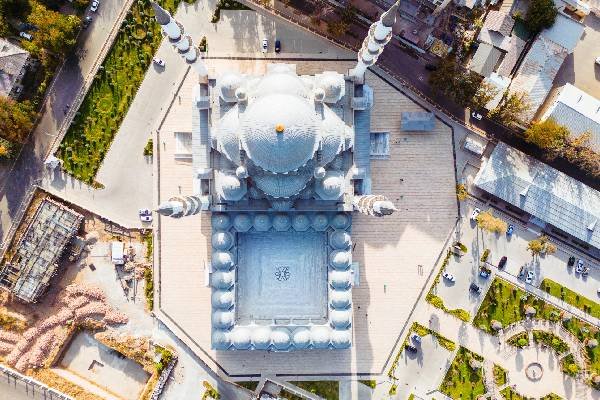Introduction to Bari Imam Sarkar

Table of Content
ToggleThe Shrine of Hazrat Bari Imam Sarkar in Islamabad is one of the most revered spiritual sites in Pakistan. Located at the heart of the capital, this historic shrine attracts thousands of devotees and visitors every year. Bari Imam, known for his deep spirituality and miracles, holds a special place in the hearts of both Shia and Sunni Muslims. In this blog post, we will explore the history of Bari Imam Sarkar, how to find the shrine using a location map, the distance from key places like Rawalpindi, and the significance of this site in Islamic culture
Imam Bari Location Map: A Detailed Guide
The Shrine of Hazrat Bari Imam Sarkar is situated in a serene area near the Margalla Hills in Islamabad, making it easily accessible from various parts of the city. The shrine is located in the village of Nurpur Shahan, which is just a short drive from the main urban areas of Islamabad.
Accessibility:
Visitors can reach the shrine via several main roads, including the Murree Road and Kashmir Highway. Public transportation, such as buses and taxis, frequently travel to this area, making it convenient for those who don’t have private vehicles. Ample parking is available near the shrine for those driving in.
Key Landmarks:
The shrine is close to notable landmarks like Daman-e-Koh and the Pir Sohawa tourist spot, making it easier for visitors to navigate. The Faisal Mosque, another significant Islamic site, is also within a short distance, providing a point of reference for those unfamiliar with the area.
Using the Location Map:
To simplify the journey, visitors can use the location map available on various mapping platforms like Google Maps. By entering “Bari Imam Shrine” or “Hazrat Bari Imam Sarkar” into the search bar, users can receive step-by-step directions from their current location. The map also highlights key landmarks and nearby points of interest, making it easier to find the most efficient route to the shrine.
Bari Imam Distance from Various Locations
Distance from Your Location
If you’re planning to visit the Bari Imam Shrine, knowing the distance from your current location is essential for better trip planning. The easiest way to calculate this distance is by using online tools like Google Maps or any GPS-enabled app on your smartphone. Simply type “Bari Imam Shrine” into the search bar, and the tool will automatically calculate the distance and provide you with estimated travel time. You can also explore different routes based on traffic conditions and your preferred mode of transportation, whether you’re driving, walking, or using public transport.
Bari Imam from Rawalpindi
For those traveling from Rawalpindi, the Bari Imam Shrine is approximately 20 to 25 kilometers away, depending on your starting point within the city. The most common and efficient route is via Murree Road (N-75), which connects directly to Islamabad. From Murree Road, you can merge onto Kashmir Highway or simply follow the signs leading towards the shrine. The drive typically takes about 30 to 45 minutes, depending on traffic. Public transport options like buses or ride-hailing services are also available for this route, offering a convenient way to reach the shrine without the need for personal transportation.
The Miracle of Imam Bari Sarkar (Mojza)
Spiritual Significance
Hazrat Bari Imam Sarkar is revered not only for his profound spirituality but also for the many miracles (Mojza) attributed to him. These miracles are believed to be a manifestation of his deep connection with the divine. Among the most well-known miracles are his ability to heal the sick, protect the vulnerable, and provide guidance to those in need. Stories of these miracles have been passed down through generations, each adding to the mystique and reverence surrounding Bari Imam Sarkar.
Importance in Local Culture and Religious Practices
The miracles of Bari Imam Sarkar play a significant role in the local culture and religious practices. They are not just seen as historical events but are woven into the daily lives and spiritual practices of the community. Many devotees visit the shrine seeking blessings, healing, or spiritual guidance, believing that the sacred space is imbued with the miraculous power of Bari Imam. These miracles also serve to strengthen the faith of the followers, fostering a deep sense of spiritual connection and devotion among those who revere him. The tales of his miracles are often recited during religious gatherings, reinforcing the cultural and spiritual heritage of the region.
Bari Imam: Shia or Sunni?
Religious Affiliation
Hazrat Bari Imam Sarkar is a highly respected figure in Islamic history, and his teachings and spiritual legacy have left a lasting impact on both Shia and Sunni communities. While there are debates about his exact religious background, with some sources suggesting Shia leanings and others pointing to Sunni practices, Bari Imam is revered by followers from both sects. His life and teachings transcended sectarian boundaries, focusing on the core principles of Islam—faith, devotion, and service to humanity.
Interfaith Significance
The Shrine of Hazrat Bari Imam Sarkar stands as a powerful symbol of unity among different Islamic sects. People from both Shia and Sunni backgrounds, as well as other faiths, visit the shrine to seek blessings and pay their respects. The shrine has become a unifying site where sectarian differences are set aside in favor of a shared reverence for Bari Imam Sarkar’s spiritual legacy. This interfaith significance underscores the inclusive nature of his teachings and the universal appeal of his message of love, peace, and devotion to God.
Miracles Associated with Bari Imam (Mojza)
Accounts of Miracles
Hazrat Bari Imam Sarkar is renowned for the numerous miracles attributed to him, which have made him a deeply venerated figure. One famous account tells of how he brought water to a barren area by striking the ground with his staff, causing a spring to flow, which is still revered as a sacred site. Another well-known miracle involves his ability to heal the sick and cure the afflicted, with many tales of people recovering from serious illnesses after seeking his blessings. These stories are cherished by devotees, who believe that the power of Bari Imam’s prayers and spiritual presence can bring about divine intervention in their lives.
Cultural Narratives
The miracles of Bari Imam Sarkar have become an integral part of the cultural and religious fabric of the region. These stories have been passed down through generations, often shared during religious gatherings, festivals, and family storytelling sessions. They serve not only as a source of spiritual inspiration but also as a way to strengthen communal bonds and maintain a connection with the past. The belief in these miracles continues to influence local customs and practices, with many people making pilgrimages to the shrine in the hopes of experiencing the blessings of Bari Imam Sarkar firsthand. The enduring nature of these narratives reflects the deep respect and devotion that the local community has for Bari Imam and his spiritual legacy.
History of Bari Imam Sarkar
Historical Background in Urdu
Hazrat Bari Imam Sarkar, born in 1617, is a prominent figure in the history of Islam, particularly in the South Asian region. His real name was Shah Abdul Latif Kazmi, and he hailed from a Sayyid family, claiming descent from the Prophet Muhammad (PBUH). The historical accounts of his life and teachings are well-documented in various Urdu sources, including religious texts, biographies, and poetry. These Urdu writings describe his early life, his quest for spiritual knowledge, and his eventual establishment as a revered saint in the region. His teachings, which emphasized humility, devotion, and service to others, attracted a large following, leading to the construction of his shrine in Islamabad, which remains a significant spiritual site.
Significant Events
Bari Imam Sarkar’s life was marked by several key events that shaped his spiritual journey and legacy. One of the most significant moments was his spiritual retreat to the mountains, where he spent several years in deep meditation and prayer, seeking closeness to God. During this period, he was visited by many people seeking guidance, and his reputation as a spiritual leader grew. Upon his return, he began to preach and perform acts of charity, which further solidified his status as a saint. Another notable event was the construction of his shrine by the Mughal Emperor Aurangzeb, who recognized Bari Imam’s influence and contributions to Islamic spirituality. The shrine has since become a pilgrimage site, attracting devotees from all over the world.
Legacy
The legacy of Hazrat Bari Imam Sarkar continues to have a profound impact on Islamic culture and spirituality in the region. His teachings and miracles are still celebrated, and his shrine remains a place of pilgrimage and devotion. The values he promoted—compassion, humility, and devotion—are reflected in the practices of his followers, who continue to honor his memory through prayer, community service, and the preservation of his teachings. Bari Imam Sarkar’s influence extends beyond religious boundaries, as his message of love and peace resonates with people of all faiths. His shrine serves as a symbol of unity and spiritual connection, embodying the timeless principles of Islam that he so passionately advocated.
Conclusion
Summary of Key Points
In this article, we explored the life, miracles, and lasting legacy of Hazrat Bari Imam Sarkar, a revered saint whose influence continues to resonate in Islamic culture. We discussed the location and accessibility of his shrine in Islamabad, its significance for both Shia and Sunni communities, and the miraculous events attributed to Bari Imam that have been passed down through generations. Additionally, we delved into the rich history of Bari Imam Sarkar, highlighting key events in his life and the enduring impact of his teachings.
Final Thoughts
The legacy of Bari Imam Sarkar remains as powerful today as it was centuries ago. His shrine not only serves as a place of spiritual solace and pilgrimage but also as a symbol of unity and peace. In a world often divided by differences, the teachings and life of Bari Imam Sarkar remind us of the importance of compassion, humility, and devotion to the divine. His message continues to inspire countless individuals, making his shrine a vital part of contemporary Islamic culture and a beacon of hope for all who seek spiritual guidance.
FAQs about Bari Imam Sarkar
1.Who is Hazrat Bari Imam Sarkar?
Hazrat Bari Imam Sarkar was a revered Islamic saint and spiritual leader born in 1617. He is known for his deep spirituality, miracles, and significant influence on both Shia and Sunni communities. His shrine in Islamabad remains a major pilgrimage site for devotees.
2.Where is the Shrine of Bari Imam Sarkar located?
The Shrine of Bari Imam Sarkar is located in Nurpur Shahan, Islamabad, near the Margalla Hills. It is accessible via major roads like Murree Road and Kashmir Highway, with various public and private transport options available.
3.What are some miracles attributed to Bari Imam Sarkar?
Bari Imam Sarkar is attributed with several miracles, including healing the sick and bringing water to barren areas. These miracles are an integral part of his legacy and continue to inspire and attract devotees to his shrine.
4.Was Bari Imam Sarkar Shia or Sunni?
Bari Imam Sarkar is revered by both Shia and Sunni Muslims. While there are differing opinions on his sectarian affiliation, his teachings and spiritual contributions transcend sectarian boundaries, making him a unifying figure in Islam.
5.What is the significance of Bari Imam Sarkar’s shrine in contemporary Islamic culture?
Bari Imam Sarkar’s shrine serves as a major spiritual and cultural landmark. It is a place of pilgrimage, prayer, and community gathering, reflecting his enduring influence and the values of compassion, humility, and devotion that he espoused.




